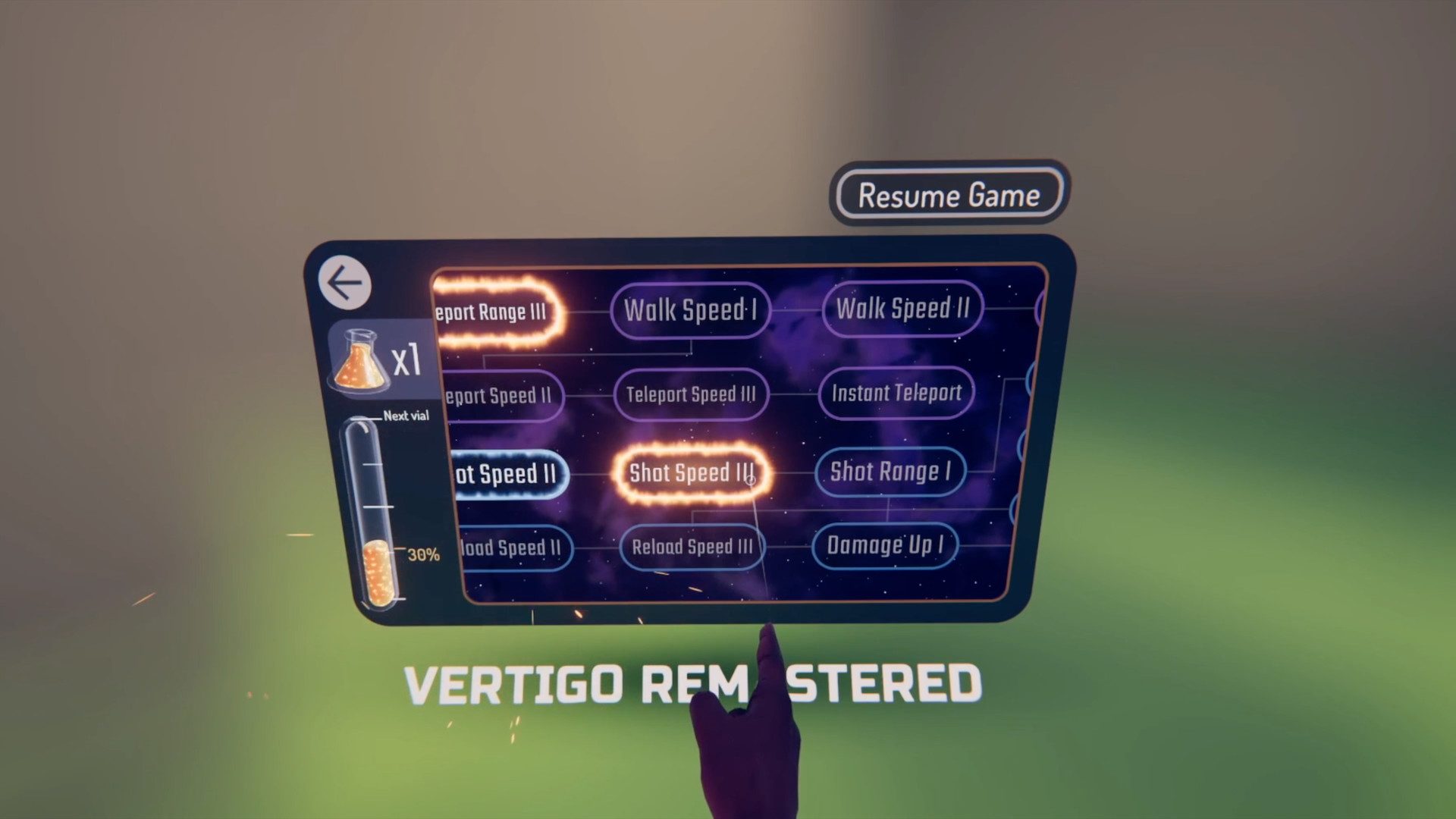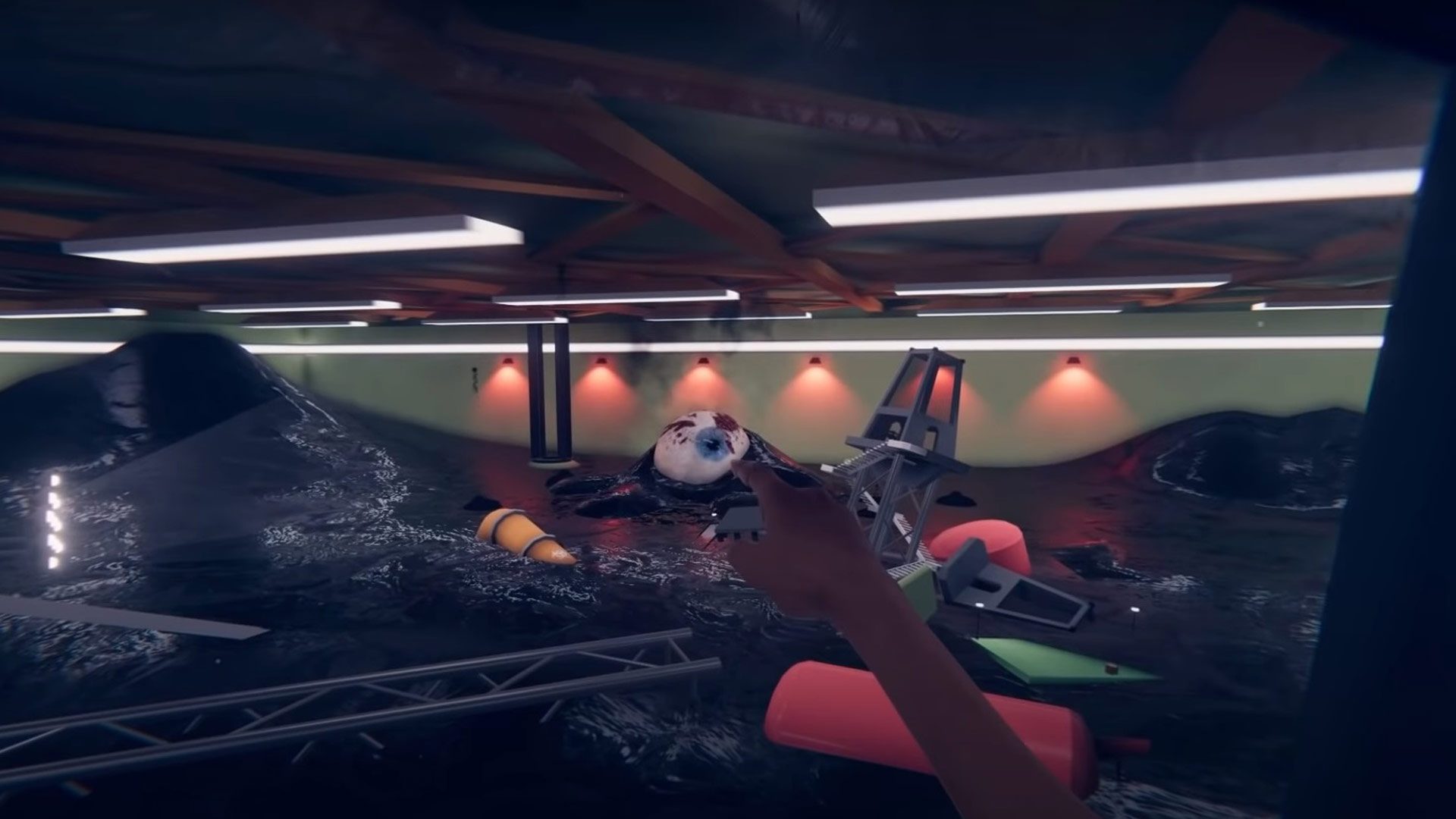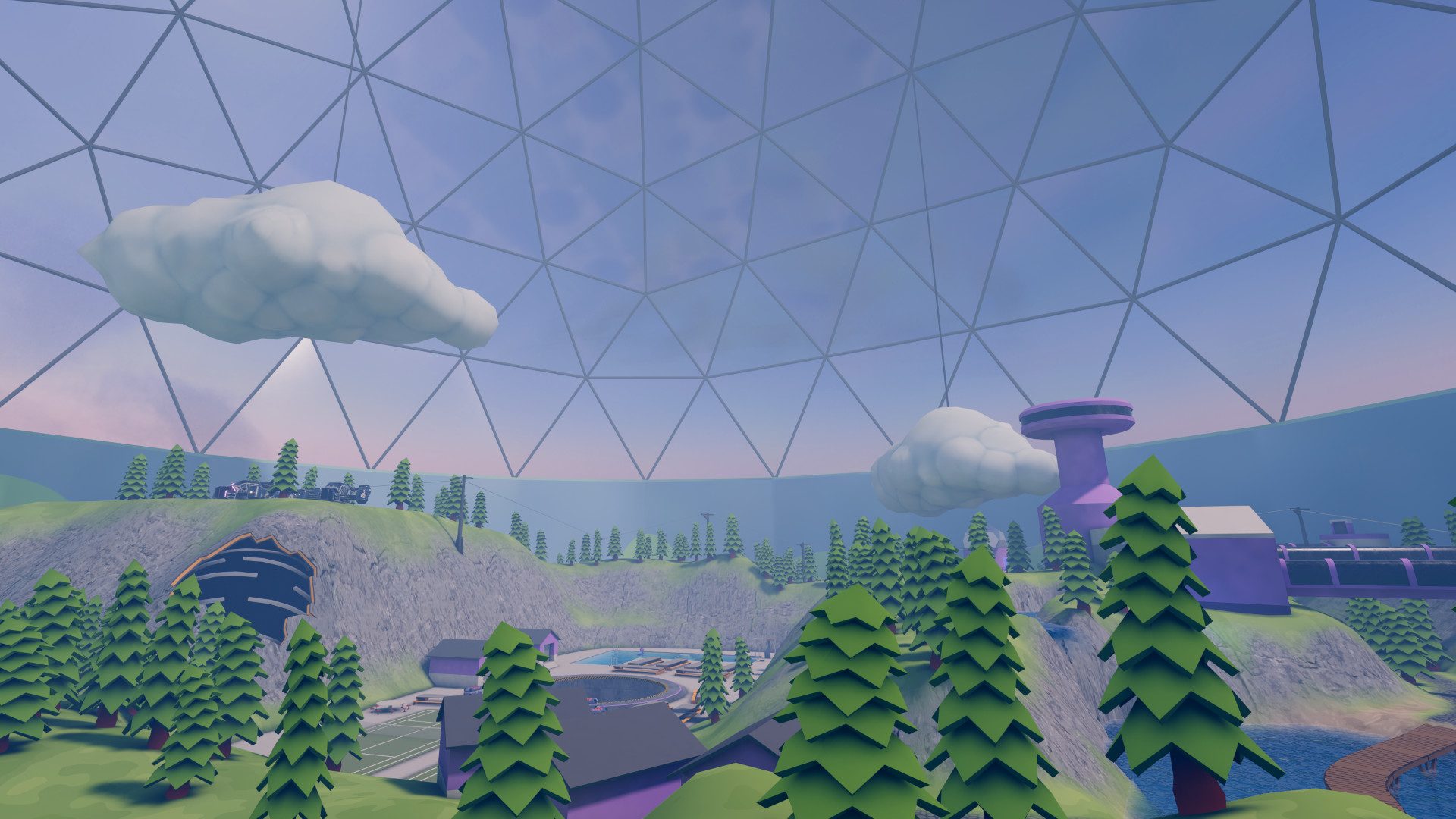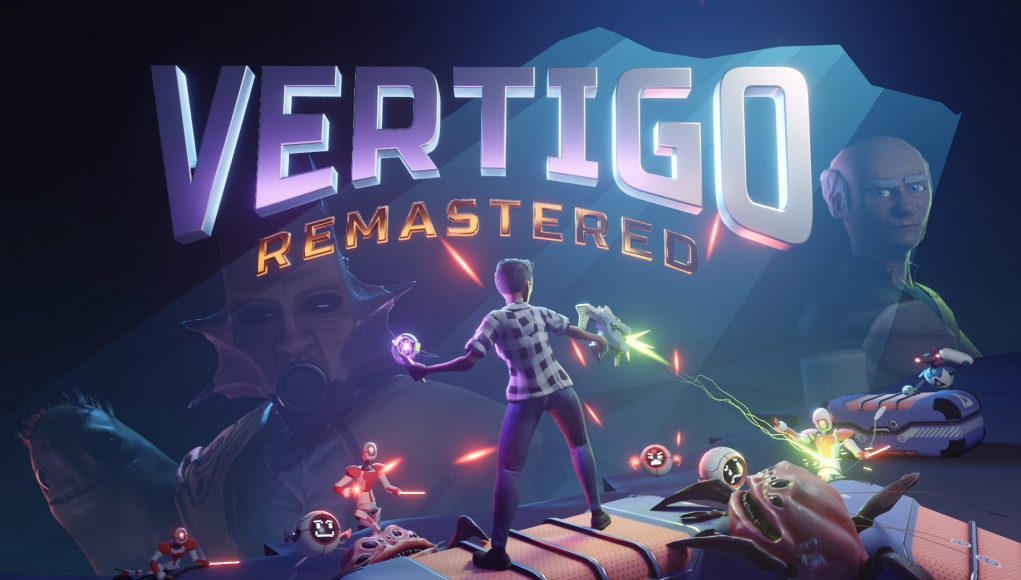Vertigo (2016) proved to be an ambitious room-scale VR title that pioneered the medium alongside the best of them back in 2016. Now ostensibly overhauled completely, Vertigo Remastered (2020) refreshes the VR shooter’s threadbare low-poly aesthetic with a richer, more immersive art style that, among other apparent tune-ups, puts a fresh coat of paint onto this plucky indie title. At its core, it’s still very much a fun and unique VR game that seems to have aged pretty well, warts and all.
Vertigo Remastered Details:
Publisher: Zulubo Productions
Developer: Zach Tsiakalis-Brown, George Eracleous, Errol Bucy
Available On: SteamVR headsets
Reviewed On: Oculus Rift, Oculus Quest (via Link)
Release Date: July 21st, 2020
Price: $25
Gameplay
Spirited away to an alternate universe, you find yourself deep below the surface of a planet in a sprawling science facility teeming with robots, aliens, and a few choice pieces of gadgetry to help you along your way back to the surface. Run by Planck Interdimensional Energy Solutions, the absolutely massive facility houses a quantum reactor which no doubt caused your disappearance from your universe in the first place. It also plays host to a good mix of combat, puzzles, and exploration, all of it lovingly framed with a tongue-in-cheek, Portal-esque, Half-Life-adjacent vibe.
What it lacks in depth and finesse, it seems to make up for it in pacing, atmosphere, and variety.

Like the original title, Vertigo Remastered boasts plenty of arcade-style shooting combat, which in this case means absolutely zero ammo or health pickups—both auto-regenerate. This sets the mood for basically the whole game: you’re on a one-way ride that you will complete eventually. Granted, to make that trip more smooth you should anticipate when your laser gun is about to run dry so you don’t end up reloading during a critical moment, and how your health ‘feels’ given how colorful the world still is. Fade entirely to black and white, and you’re tossed back to your last auto-checkpoint.
There’s only a few weapons available in the entire game, a baton and three guns. Each gun is basically rendered obsolete when you pick up a new one. Instead of finding new guns though, you instead focus on sucking up energy globules with your teleportation wand.

Why? In effect, this rewards the player by exploring the entire game by letting you unlock various cool things in the game’s tech tree, like faster shooting, reloading, teleporting, gun upgrades, etc.
Oh, and besides making it possible to traverse wide gaps or other non-continuous walking path, you can basically forget the teleport wand completely. Not like it helps in a firefight anyway. The inventory UI isn’t the quickest way to access weapons/tools anyway, so if you’re intent on using it, you might as well leave it locked to your non-dominant hand while you used your other for something, well, more useful.

Vertigo Remastered features a classic enemy progression, with new types arriving one-by-one until you have to fight them all in various admixtures. I would have liked more variation in enemies, as the game basically serves up a half-dozen types that fundamentally act as samey bullet sponges, which seems to be the case on all three difficulty levels. Without any real indication of whether they’ve taken critical damage or not before exploding, you’re basically just acquiring a target, shooting, reloading, rinse and repeat. Were it not for the well-varied boss fights, which act as fun and interesting intermissions to the overall tepid shooting experience, I don’t think I would be nearly as charmed by Vertigo Remastered as I am.

And boss fights are a real highlight of the game anyway, as you use one-off tools and mechanics to defeat the larger-than-life enemies.
Outside of its heavy emphasis on shooting, it also offers a nice mix of puzzles. Although there’s no real progression in terms of skill building, the four hours it took me to beat were well spent. I never felt like I was doing the same task twice when it came to puzzles, which is just how it should be in a shooter-adventure.
One of my favorite bits of Vertigo is the whimsical transitions to wildly different parts of the facility. You might find yourself boarding an enemy dropship only to break out through the glass of a geodesic biodome, putting you in the next part of the facility, and not at the surface like you may have hoped. Or maybe you think you’re clever by avoiding a set of metal detectors and hunkering down in the baggage carousel to carry on to the next area, only to find yourself detected by the automatic ‘oversized baggage’ protocol which then shrinks you down to the size of a kumquat, leaving you to sally forth to eradicate an alien pest which was previously just an underfoot annoyance. You’re always left guessing at what’s next, and this has me forgiving some of the grunt work the game asks of you in the shooting department.

This crazy and whimsical tone is underlined with a thin thread of seriousness surrounding the plight of the human employees, who have all mysteriously disappeared. Provided you don’t read too much into the auto-playing employee logs littered everywhere, it basically stays well within its lane as a comedic, light-hearted ride. Besides, if fiction has taught us anything: you should never really give a shit about anyone in an alternate universe.
In all, the game is a fun and worthwhile time, but is also somewhat hampered in the Immersion and Comfort departments. Read on to find out why.
Immersion
Like its 2016 forbear, it stridently offers the player a physics-based gaming experience that can at times completely flip out in weird and unexpected ways. When the stars align and physics weirdness doesn’t creep in, shooting and puzzle solving can be a pretty hitch-free experience, although that’s invariably not always the case with Vertigo Remastered.
For example: grabbing onto anything solid and moving away will instantly turn you into Stretch Armstrong. You’ll magically lose items that are lock-tight in your hand while riding on elevators. You’ll curse as you drop a keycard on the ground for the third time and mash it into the reader panel because the key is fiddly and requires seemingly expert guidance to find its home. It doesn’t break the game, but it does break immersion.

Focalizing on the issue: object interaction is just iffy most of the time. In order to pick something up, you can 1) bend over and pick it up, which isn’t fun at all in VR or 2) enable crouch by moving your joystick down, which is doubly not fun in VR because it’s too easy to activate on Touch and is just about the more gamey, non-immersive way of achieving the singular goal of picking something up from the ground. Force grabbing would have been much more appreciated here, and it’s something I’m hoping for in the upcoming sequel, Vertigo 2. There doesn’t seem to be a way to disable crouch, which is a shame.
And despite all these negatives, I still want to root for Vertigo Remastered. Seeing past physics weirdness and even some of the comfort issues listed below, it’s more good than bad, more fun than frustrating, and it does it all in a package that I still can’t believe was created by a small, independent team. Even when it’s janky and silly things happen it’s still fun and rewarding. Even when it’s clear the developer didn’t know how to get you from point A to point B, you appreciate the heartfelt understanding that its users are here not to be bored. We must be entertained, and entertained I was.
Comfort
While the game has benefitted from a full graphical overhaul, some of the very 2016 VR concepts used in Vertigo Remastered linger from the previous version.
Multiple times throughout the game you’re put on a wild cart ride of various manufacture that can cause nausea in the same sort of users that would actively avoid VR rollercoasters. The remaster polishes up these sequences graphically, but still presents them in their full, herky-jerky glory. I’m the sort of person who needs to look down or close my eyes entirely when the world goes topsy-turvy and I’m not controlling it.
Smooth locomotion is available with variable snap-turning, which helps keep the user comfortable in many situations, but not all. Both head and hand-relative smooth forward motion is available. Vertigo Remastered is equally playable in seated and standing mode.
As for smooth locomotion (read: not smooth turning), when the firefight gets heavy and you have to dodge projectiles from multiple enemies, you’ll most likely instinctively revert to the tried and true FPS method of strafing and blindly moving backwards. You tend to not dodge with your physical movements, but rather with your joystick. If you’re susceptible to any amount of motion sickness, you’ll need to pay close attention to how much you locomote in-game, otherwise you may find yourself a bit green in the gills.







